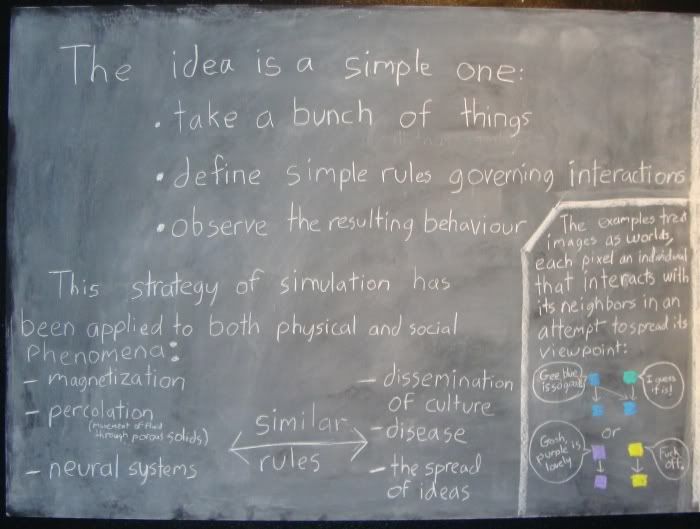The gallery was pretty dark to allow for maximum viewing pleasure. There were three small monitors on one side, and on the other side was a chalkboard that described (sort of) how these images worked.

Andrew Zukoski, Viral Ox Added installation detail, video and chalkboard, 2010
If I am reading this right, here's what I think Zukoski is doing. He has layers of images. Starting from a black screen (the "top" layer), each pixel will change color to the pixel underneath if certain conditions are met. So when we start with the top image (a black screen), the way it creeps outward shows the algorithm cycling through over and over. I suspect the algorithm looks at every visible pixel and then looks at the pixels underneath and/or adjacent to it, then decides whether to change the pixel to the one underneath.
This reminds me of the Game of Life. In this "game," grid locations (which can be pixels on a screen) are either on or off. As the game cycles through, they change state based on the on or off-ness of the adjacent grid locations. (The grid is Cartesian, so any "cell," as they call it in Life, has eight adjacent cells.) It turns out that you can create interesting forms that as the game cycles through, can give "birth" to other forms. This was invented as a mathematical exercise, not as an artform. But it is hard not to see Life as an artistic medium.
Why this needed to be explained on the chalkboard, I don't know. And mentioning that this type of algorithm has been used to simulate physical and social phenomena seems trivial and irrelevant. What may have been more interesting would have been to know the actual rules for changing pixels.

No comments:
Post a Comment